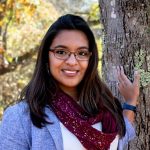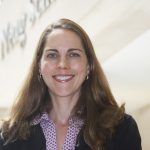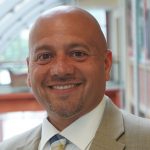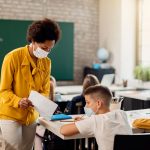A year ago, we were wondering when the vaccine would be available and is it really safe to return to school? Today, those questions are still relevant! This hour, we talk about the mental health needs of students. What sort of support will children need from their schools? Sandra Chafouleas, a Board of Trustees Distinguished Professor of Educational Psychology and co-director of the Collaboratory on School and Child Health at the University of Connecticut, is interviewed.
This fall, the Neag School is delighted to introduce its inaugural cohort of National Holmes Scholars.
The University of Connecticut has named Morgaen L. Donaldson, a renowned scholar of educational leadership and policy, as the next Philip E. Austin Endowed Chair.
Meet Jason G. Irizarry, Ed.D., who is kicking off his first full academic year as dean of UConn’s Neag School of Education. Irizarry, who grew up in New York City and served as a teacher before pursuing a path to leadership in higher education, was appointed dean for a five-year term in May 2021.
This fall, the Neag School welcomes its incoming hires, congratulates existing faculty members on new appointments, and celebrates the first full academic year with its dean, Jason G. Irizarry, and his newly appointed leadership team.
Devin Kearns, a reading disability researcher who’s been working with the education department on the new universal screening program, said the assessments can take as little as one minute to conduct to identify which skills young readers need extra support with.
The University of Connecticut has named Morgaen L. Donaldson, a renowned scholar of educational leadership and policy, as the next Philip E. Austin Endowed Chair. The Austin Chair was endowed by a group of alumni and supporters to recognize President Emeritus Austin’s many contributions to the University, leading UConn’s transformation into its present status as a top public university in the nation.
Even before COVID-19, as many as 1 in 6 young children had a diagnosed mental, behavioral or developmental disorder. New findings suggest a doubling of rates of disorders such as anxiety and depression among children and adolescents during the pandemic. One reason is that children’s well-being is tightly connected to family and community conditions such as stress and financial worries.
In her work in schools in Central Florida, Dr. Rebecca Campbell-Montalvo, postdoctoral research associate in the University of Connecticut Neag School of Education, found that parents can be hesitant to disclose the languages their children speak for a variety of reasons. She explains that by “making a welcoming school climate and atmosphere and culture that people can perceive,” parents will be encouraged to report home languages. Creating a welcoming atmosphere could involve displaying signs, sending families information in multiple languages, and providing translators at school events.
“Even before COVID-19, as many as 1 in 6 young children had a diagnosed mental, behavioral or developmental disorder. New findings suggest a doubling of rates of disorders such as anxiety and depression among children and adolescents during the pandemic. One reason is that children’s well-being is tightly connected to family and community conditions such as stress and financial worries,” co-writes Sandra Chafouleas, a Board of Trustees Distinguished Professor in the Neag School of Education.




